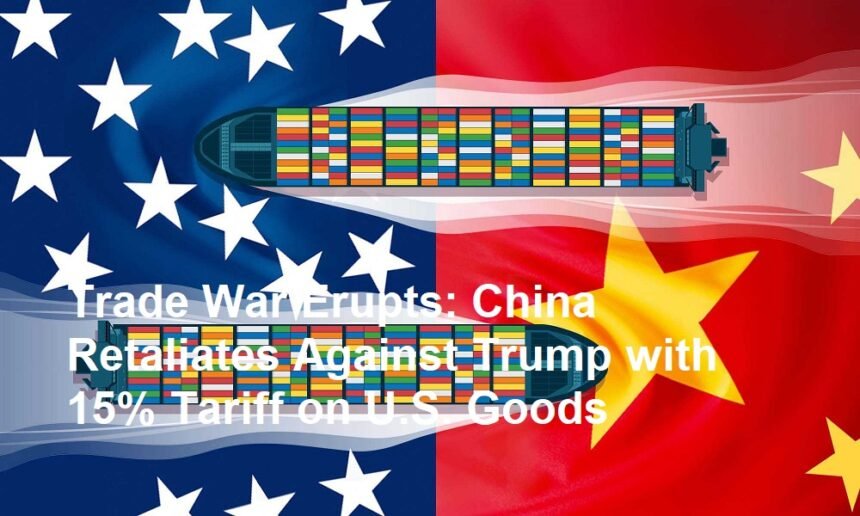In a dramatic escalation of trade tensions between the United States and China, Beijing has announced the imposition of a 15% tariff on a wide range of American goods. The move, which came as a direct response to provocative trade policies and public threats made by former President Donald Trump, marks a significant turning point in the ongoing trade war between the two economic powerhouses.
The announcement was made at a press conference in Beijing on February 20, 2025, by a spokesperson for China’s Ministry of Commerce. “After careful consideration, we have decided to impose a 15% tariff on certain categories of U.S. products,” the spokesperson stated. “This measure is a necessary response to the unilateral trade actions taken by the United States, which have negatively impacted our domestic industries and global trade stability.”
The affected categories include a broad array of consumer electronics, agricultural products, and industrial components. Chinese officials argue that these tariffs are intended to level the playing field and protect China’s strategic interests, particularly in light of what they perceive as unfair trade practices from the United States. For Beijing, the tariff is not only a defensive measure but also a strategic tool aimed at encouraging American companies to reconsider their current policies and practices.
Economic analysts have noted that the imposition of a 15% tariff could have far-reaching implications for both countries. In the short term, U.S. exporters may face increased costs and reduced competitiveness in the vast Chinese market. Industries that rely heavily on bilateral trade, such as technology and agriculture, are expected to feel the immediate effects. “This is a clear signal that China is prepared to use its tariff policies as leverage in trade negotiations,” said Professor Michael Adams, an expert in international trade at the University of Chicago. “U.S. companies will need to adjust their supply chains and pricing strategies to mitigate the impact of these tariffs.”
The move has also reignited fears of a full-blown trade war, with both sides potentially escalating their retaliatory measures. American officials have yet to issue a formal response to China’s latest action. However, several U.S. senators and trade representatives have expressed concern that such tariffs could trigger a domino effect, leading to further disruptions in global supply chains and a slowdown in international economic growth. “We must approach this situation with caution,” commented Senator Lisa Harding, a longtime advocate for fair trade practices. “Escalation in tariffs on either side can have a ripple effect that ultimately hurts consumers and businesses worldwide.”
For China, the new tariff policy is part of a broader strategy to assert economic sovereignty and counterbalance what it sees as American protectionism. Over the past few years, China has steadily built up its domestic market and invested heavily in technological innovation, aiming to reduce its dependency on foreign goods. This policy shift reflects Beijing’s determination to not only protect its economic interests but also to reposition itself as a key player in shaping the future of global trade.
In addition to immediate economic considerations, the tariff move carries significant political symbolism. By targeting U.S. products, China is sending a strong message to Washington that it will not tolerate trade practices that undermine its national interests. This development comes at a time when both nations are re-evaluating their trade policies amid shifting geopolitical alliances and evolving economic landscapes.
As the situation unfolds, businesses on both sides of the Pacific are bracing for potential disruptions. Some companies are already exploring alternative markets and diversifying their supply chains to reduce reliance on bilateral trade between the U.S. and China. Analysts warn that prolonged trade tensions could lead to higher consumer prices and slower economic growth, making it imperative for policymakers to find a diplomatic resolution.
In conclusion, China’s imposition of a 15% tariff on U.S. goods represents a bold and decisive move in the ongoing trade conflict with the United States. As both nations navigate this precarious situation, the international community watches closely, hoping for a resolution that will stabilize global markets a













